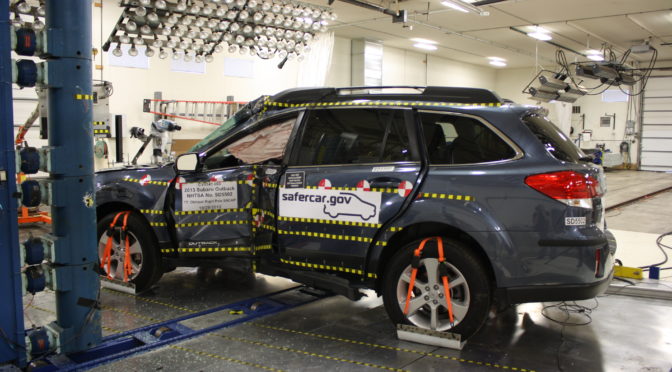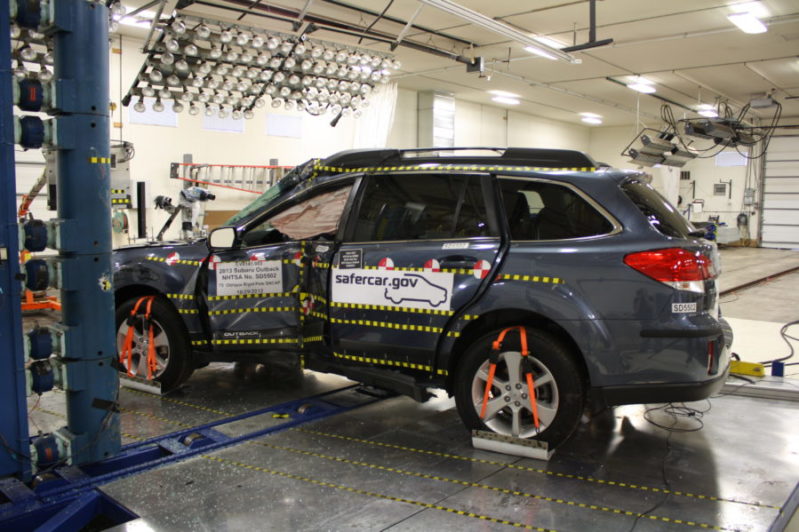
Subarus have a reputation for safety among middle-to-upper class educated car buyers, and it’s not hard to see why: their flagship wagon, sedan, and SUV, the Outback, Legacy, and Forester, constantly land on the IIHS’ “top safety pick” lists year after year.
However, the ultimate question of vehicle safety doesn’t have to do with how vehicles test in controlled crashes, but with how they actually protect drivers and passengers on the daily bloodbath that is the US road network. If you’re up for crunching NHTSA FARS data, you can pull the figures yourself, but if you’re short on time, the IIHS periodically runs their own calculations and publishes lists of driver death rates for recently sold new vehicles. I enjoy reviewing the data, even though it involves a.) large margins of error and b.) overlooks two thirds of what’s most important in auto safety–road design and driver behavior.
This is part of a series on the IIHS’ summer 2017 Status Report (volume 52, number 3); previous articles include what’s the safest electric / hybrid: the Volt, the Leaf, or the Prius?, Civic vs Accord safety showdown, and my Cruze is as safe as your Suburban. Today we’ll look at whether or not there’s a safety difference between the sales-leading Subaru Outback, its sedan equivalent Subaru Legacy, and the SUV / CUV Subaru Forester.
2011-2014 Subaru Outback – 12 driver deaths (5-20)
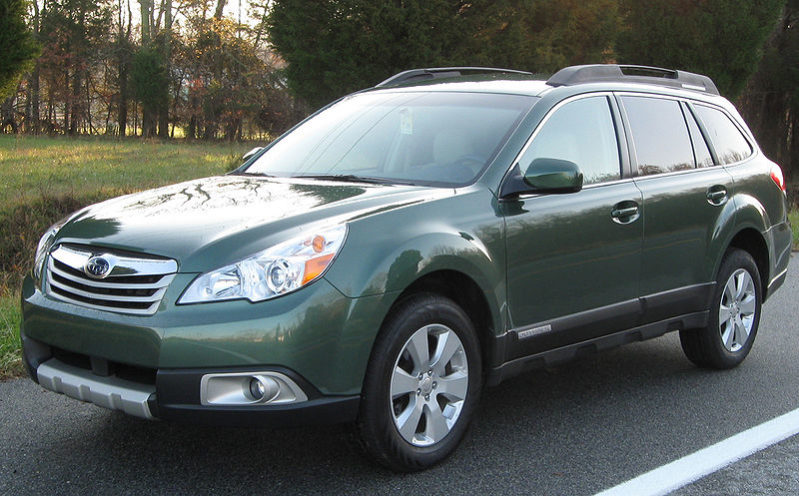 Per the IIHS, the Subaru Outback’s estimated driver death rate during the 2011-2014 model years was 12, with 8 of those deaths predicted to occur during multiple vehicle crashes, 3 from single vehicle crashes, and 1 of those from a rollover. The exposure came from 1,116, 891 registered vehicle years. As the IIHS notes, a registered vehicle year refers to one vehicle registered for a full year. This basically means that the IIHS took NHTSA FARS data about fatal car crashes and crossed it with IHS vehicle registration data to make a model of driver death estimates. Their calculations essentially state that if 1 million drivers drove 1 million ’11-’14 Outbacks throughout the US for a year, we’d expect 12 of them to die.
Per the IIHS, the Subaru Outback’s estimated driver death rate during the 2011-2014 model years was 12, with 8 of those deaths predicted to occur during multiple vehicle crashes, 3 from single vehicle crashes, and 1 of those from a rollover. The exposure came from 1,116, 891 registered vehicle years. As the IIHS notes, a registered vehicle year refers to one vehicle registered for a full year. This basically means that the IIHS took NHTSA FARS data about fatal car crashes and crossed it with IHS vehicle registration data to make a model of driver death estimates. Their calculations essentially state that if 1 million drivers drove 1 million ’11-’14 Outbacks throughout the US for a year, we’d expect 12 of them to die.
2011-2014 Subaru Legacy – 20 driver deaths (4-36)
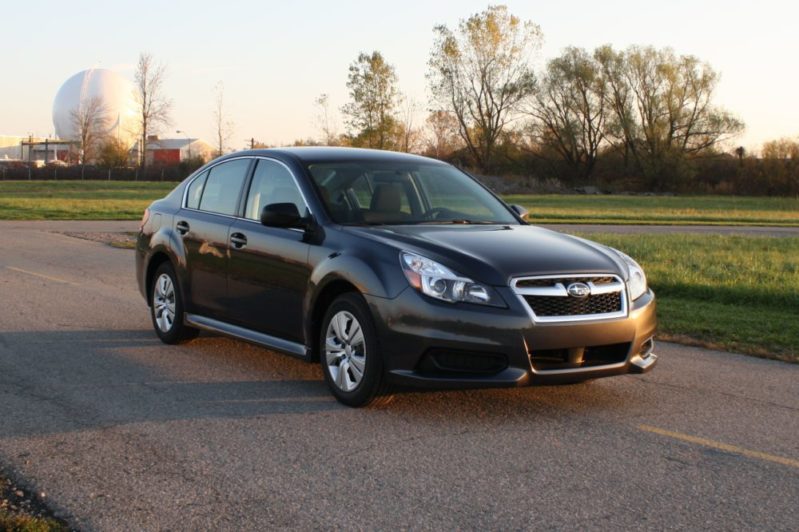 The Legacy’s estimated driver death rate during the 2011-2014 model years was 20, with 14 estimated to occur from multi-vehicle crashes, 5 from single vehicle crashes, and 4 of those from rollovers. The exposure resulted from 428,322 registered vehicle years, a figure roughly 1/3rd the size of the Outback’s, which resulted in a much larger confidence bound (spanning 33 instead of 16 with the Outback). As with the Outback, it’s important to remember that the figure above doesn’t mean 20 drivers died while driving Legacys; it means that in a sample of 1 million drivers driving 1 million ’11-’14 Legacys for a year, we’d expect 20 of them to die over the year.
The Legacy’s estimated driver death rate during the 2011-2014 model years was 20, with 14 estimated to occur from multi-vehicle crashes, 5 from single vehicle crashes, and 4 of those from rollovers. The exposure resulted from 428,322 registered vehicle years, a figure roughly 1/3rd the size of the Outback’s, which resulted in a much larger confidence bound (spanning 33 instead of 16 with the Outback). As with the Outback, it’s important to remember that the figure above doesn’t mean 20 drivers died while driving Legacys; it means that in a sample of 1 million drivers driving 1 million ’11-’14 Legacys for a year, we’d expect 20 of them to die over the year.
2014 Subaru Forester – 28 driver deaths (3-53)
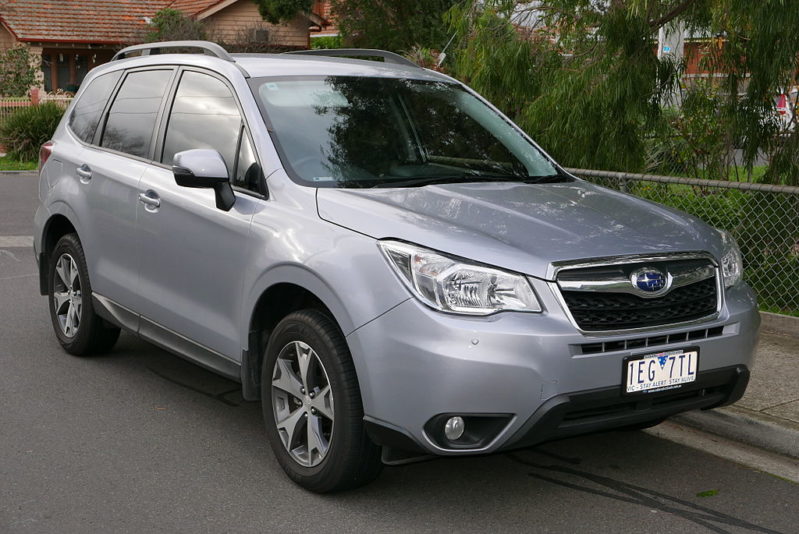 Finally we come to the Forester. It had the highest estimated rate of driver deaths at 28 for the 2014 model year, with 17 predicted multiple vehicle fatalities and 11 deaths resulting from single vehicle crashes. The exposure was based on 134,402 registered vehicle years, the smallest of the three vehicles, which is why the confidence bound spanned 51 instead of 33 as with the Legacy or 16 as with the Outback. For reference, the smallest exposure figure the IIHS uses for their calculations is 100,000 registered vehicle years. Below that, they likely find the figure either introduces too much error into their models or results in a larger than desirable confidence bound. At any rate, the driver death figure means that if we let 1 million drivers loose with 1 million 2014 Foresters, we’d expect 28 of them to die in the course of a year’s worth of driving throughout the country–in New England, in the MidWest, in the South, and in the West.
Finally we come to the Forester. It had the highest estimated rate of driver deaths at 28 for the 2014 model year, with 17 predicted multiple vehicle fatalities and 11 deaths resulting from single vehicle crashes. The exposure was based on 134,402 registered vehicle years, the smallest of the three vehicles, which is why the confidence bound spanned 51 instead of 33 as with the Legacy or 16 as with the Outback. For reference, the smallest exposure figure the IIHS uses for their calculations is 100,000 registered vehicle years. Below that, they likely find the figure either introduces too much error into their models or results in a larger than desirable confidence bound. At any rate, the driver death figure means that if we let 1 million drivers loose with 1 million 2014 Foresters, we’d expect 28 of them to die in the course of a year’s worth of driving throughout the country–in New England, in the MidWest, in the South, and in the West.
Does this mean the Outback is the safest, followed by the Legacy, then the Forester?
Not quite. Although the Outback had the lowest driver death rate, followed by the Legacy’s at 20 and the Forester’s at 18, none of the driver death rates were statistically different from the others. This is where the confidence bounds become important. The 95% confidence bounds give us an estimate of where the true driver death rate would fall 95% of the time when we sampled the car and driver pool (e.g., when we allowed 1 million drivers to drive 1 million of the given vehicles for a year, or 500,000 drivers to drive 500,000 of the vehicles for 2 years).
The Outback’s true driver death rate would, per the model, almost always fall between 5 and 20. The Legacy’s? Between 4 and 36. The Forester’s? Between 3 and 53. In other words, there’s a chance (5-20, or 16, out of 3-53, or 51) of 16/51, or 31%, that all three vehicles share exactly the same driver death rate. There’s a chance that the Outback had the lowest true death rate for drivers, a chance that the title would go to the Legacy, and a chance that it actually belonged to the Forester. The broad point is that there’s no way to statistically prove that any of the three vehicles was safer than the other two based on the IIHS’ calculations. Or to put it even more bluntly, we can’t statistically prove that any differences in the driver death rate weren’t simply due to chance.
Does this mean that my children, husband, wife, or family are equally safe in a Forester, Legacy, and Outback?
Per the calculations of the IIHS, yes. Despite the differences in size and price of the vehicles, their actual driving safety as measured by records of driver fatalities in each vehicle did not show a significant difference in odds of survivability from one vehicle to the next. Keep in mind that the IIHS only surveyed driver data, rather than passenger survival data (including that for children). However, since all three vehicles include the same core safety features (i.e., good frontal and side crash scores, side airbags with head protection, and ESC), each could be expected to provide the same amount of passenger protection as individual driver protection. An Outback is a good choice for a family, but so is a Legacy, and so is a Forester. If you’re lucky enough to drive any of these vehicles, whether you survive or not will depend far more on how and where you drive than on which one you’re driving–which will make, statistically speaking, no difference whatsoever.
What’s the single most important thing I can do to keep my family safe in an Outback / Forester / Legacy (or any other vehicle)?
If you’re already in one of these vehicles, or even if you’re not, you’ll get the lion’s share of protection from simply observing the three following rules: Choose safe speeds, follow best practices with car seats, and choose safe roads. Do these three things, and you’ll increase your family’s odds of both avoiding and surviving crashes by more than you’d manage through any vehicle choice.
 If you find my information on best practices in car and car seat safety helpful, you can do your shopping through this Amazon link. Canadians can shop here for Canadian purchases. Have a question or want to discuss best practices? Join us in the forums!
If you find my information on best practices in car and car seat safety helpful, you can do your shopping through this Amazon link. Canadians can shop here for Canadian purchases. Have a question or want to discuss best practices? Join us in the forums!

